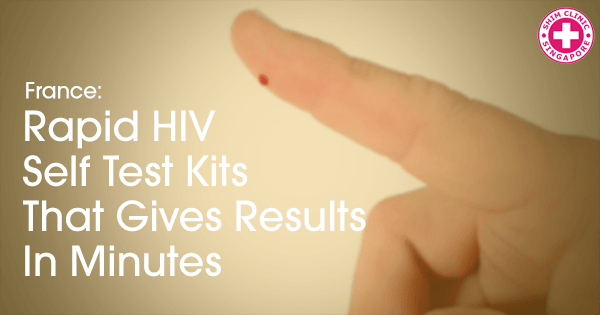Approximately 150,000 persons in France are infected with HIV and among them, 30,000 do not even know that they are HIV-positive. According to the annual National Health Public Institute reports, about 6500 new cases of HIV are reported every year.
Sadly, a significant number of these new cases are only detected in the final advanced stages of HIV lowering the quality of life. This has prompted the development of HIV self-tests since 1994 to reduce the number of HIV infection cases.
Despite the tests being highly sensitive and specific, their use by the general public is in very low numbers. Rapid HIV tests using either oral fluid or blood samples have been in existence and available at health centers powered by AIDS associations since 2010 but only those who are trained on their use were allowed to use them.
The French Ministry of Social Health and Women’s Rights in collaboration with various expert committees such as the National AIDS Council were for the idea of selling the HIV self-testing kits to the public after the US Food and Drugs Administration approved them in 2012.
Blood Tests more Sensitive than Oral Tests
It is after these events that a group of researchers in 2013, namely Thierry Prazuck, Stephen Karon, Camelia Gubavu, Jerome Andre, Jean Marie Legall, Elisabeth Bouvet, Georges Kreplak, Jean Paul Teglas, and Gilles Pialoux affiliated to Department of Infectious Diseases, Centre Hospitalier Régional, Orléans, HF Prevention, Trappes, Aides, Hôpital Universitaire Bichat Claude Bernard, Centre de Biologie du Chemin Vert (CBCV), INSERM INED, U822, Hôpital Kremlin Bicêtre, Le Kremlin-Bicêtre, and Hôpital Tenon all in France conducted a study on the sensitivity of 5 HIV self-tests approved for home use.
They concluded that blood tests were more sensitive than oral tests. With this information, the group of researchers performed two studies to evaluate the whole blood finger prick HIV self-tests. This follow-up study included assessing the practicability of the test as well as the ability of the participants in the study to interpret the test results.
The study was done in 2 sections:
- Evaluation of the participants’ ability to perform the self-test correctly.
- Evaluating the ability of the participants of the study to read and interpret the test results correctly.
Those who participated in the study had done so voluntarily and had been recruited during a screening program run by AIDES and HF-Prevention associated the Anonymous & Free Testing Centre who had the following characteristics:
- Were above 18 years
- Were willing to be tested for HIV
- Could easily speak and understand French
The study was carried out in 2 sub studies:
Sub study 1- Usage of the Self-Test
The participants received the kit that included the test, its accessories and instructions on how to use it. They had the discretion to either perform the test alone or with the assistance of the observer. The participants were not allowed to read their results since only authorized personnel were allowed to use the device at the time.
The observer would take photographs of the test to record the correct or incorrect use of the test. After 15 minutes, the participants would then move to a different room with a trained staff who performed the regular HIV rapid test that included counseling before and after the test.
Sub study 2- Reading and Analysis of the Results
Each participant was shown a bag containing 6 uniform test results comprising of 2 positive, 2 negative and 2 invalid results where the participants had to choose 4, in random, from the standardized tests and pen down the results for each test by means of a chart to interpret the results.
Almost all participants (99.2%) used the self-test correctly including those who needed assistance and 98.1% correctly interpreted the test results. The study proves that the self-test is easy to use and understand by the general public.
The test also provides an alternative to those who do not like testing at health centers for confidentiality purposes. The finger stick blood HIV self-test has been suggested to replace oral fluid based self-testing in France after the results of this study.
Our Conclusion
The self-test is fast, easy and convenient to use. The test should be introduced in areas that have a high prevalence of HIV and where people are afraid to go for HIV testing and other STD testing at STD clinics due to the stigma that comes from it.
Read the study here:
http://journals.plos.org/plosone/article?id=10.1371/journal.pone.0146755

